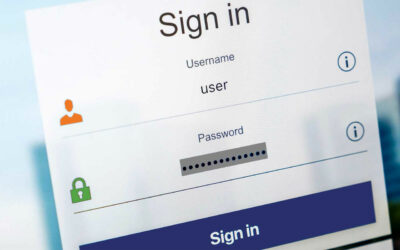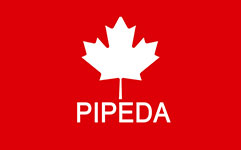Fraud prevention starts with awareness.
Many businesses – especially small businesses – operate under a misconception that scammers only target large corporations. This is perhaps one of the biggest myths surrounding fraud, along with the belief that if a scam does come along, it will easily be detected and avoided. In reality, it’s this mindset that has cost almost half of Canadian organizations a combined total of $379 million in losses in 2020.
The truth of the matter is that there’s a scam out there for everyone
– and the best way to fight it is to prevent it.
Vigilance and education are the most important steps a business can take to prevent fraud. Keep reading to build the skills needed for fraud detection and prevention.
Should my business really be worried about fraud?
If you believe your business is exempt from falling victim to fraud, you’re not the only one. Many small and medium businesses believe they are not at risk of falling victim to fraud. The truth, however, is that businesses of all sizes need to stay vigilant when it comes to fraud. What’s more, it’s the small businesses that need to be on even higher alert. According to The Canadian Federation of Independent Business, one third of small businesses experience one (or more) fraud attempts each year. This is why putting effective fraud prevention measures in place and giving employees proper training on how to recognize and report fraud is so crucial.
Whether you are a small or large business, understanding how fraud works is important and will help you create a strong foundation for continued and effective fraud prevention.
2021 was a historic year for losses due to fraud
Think you have all your ‘weak points’ covered?
In 2021, The Canadian Anti-Fraud Centre (CAFC) reported approximately $379 million of loss due to scams and fraud against businesses. This was a historic year of high financial losses, with a 130% increase from 2020. The pandemic contributed to this increase, as many of us began to rely on technology and online services at unprecedented levels. The surge in usage coupled with the ever-changing news and uncertainty about the pandemic set up a perfect environment for cyber criminals to carry out fraud schemes. Cyberattacks and fraud are only predicted to increase in frequency and severity, so it’s time to seriously consider fraud prevention tactics for your business.
Let’s look at what organizations should be aware of to recognize, reject, and report fraud!
Fraud prevention begins with education and vigilance.
Education and vigilance are where fraud prevention begins. The best way to prevent your business from falling victim to fraud is to understand the different types of scams, their characteristics and what red flags you should always look out for. When spotted, it’s important to report potential scams to the police, the Canadian Anti-Fraud Centre, or the Competition Bureau.
Fraud tactics get more advanced and well-developed every day, making it all the important to stay updated on the latest prevention methods.
The characteristics of fraud all businesses need to be aware of:
Although scammer tricks change and evolve daily, there are many common techniques that cybercriminals use time and time again to lure businesses and individuals into their trap. If you believe you’re being faced with a fraud or scam attempt, look out for the following characteristics to work towards fraud prevention:
Urgency: A message that prompts a sense of urgency and pushes you to act immediately is likely a scam. Take these unsolicited requests for sensitive information very seriously. Take a step back if you are faced with language that seems pushy and is suddenly urging you to act now ‘or else’ – even if it seems to be coming from a person you know, such as a friend or manager.
Authority: A sense of authority can be falsely created using convincing language or even fake logos. These can be trickier to spot because of how persuasive the messaging appears. A common example of this is the Canada Revenue agency scam calls that many Canadians fell victim to in the last few years. You may be more likely to pay attention to a scam that requests that you are required to act by law to do X, Y, Z etc. or one that instills a sense of reputability for the service or product that is being falsely presented to you.
Untraceable Payment Methods: Scammers do not want their transactions to be tracked – obviously. That’s why they often request wire transfers, gift cards, Bitcoin or other forms of digital currency as payment methods.
Red Flag Checklist:
Request for wire transfer or cryptocurrency
Request for personal information
Spelling mistakes
Unsolicited calls or emails
A sense of urgency
Too good to be true offers/promotions

Common Scams Against Small Businesses
Businesses can fall victim to any type of scam. However, there are some scams that are more common than others. It’s important to be aware of the most common scams against businesses in order to apply effective fraud prevention techniques.
1. Business grants and loans scam
These types of scams target small and medium sized businesses who are applying for grants and loans – typically from what they believe are official government department websites. These sites are designed to mimic government websites and claim to provide access to government funding programs for a fee. The best way to spot these types of scams is to remember that government departments or agencies don’t charge for services or information related to grant or loan applications. Always be skeptical and take the time to examine the website and research the source before providing any personal information or credit card/banking details.
2. Directory scam
As a business, you probably get contacted by a lot of unknown people. Be wary of seemingly legitimate business suppliers wanting to confirm your address or contact information and claiming that your company has purchased an ad listing in the past. If you confirm by providing details, you have agreed to purchase a directory listing and will receive an invoice for hundreds of dollars. To avoid falling for this type of scam, keep in mind that if your business has a history with a supplier, the supplier will be able to provide the address they have on file, along with any other proof needed to verify any past purchases.
Note – A directory scam can also come in the form of an email. Be sure to check the bottom of the page, where the fine print will state that by signing the notice you have agreed to purchase a directory listing for a fee.
3. Phishing, smishing and vishing scams
These types of scams all refer to a similar practice of tricking people/businesses into providing sensitive information such as passwords or credit card numbers. In a phishing scam, you may be contacted via phone call, social media, email, or text. Scammers often pose as service providers, financial institutions, a client, supplies or even a government organization. To spot a phishing scam, always be wary of unsolicited emails or phone calls and do not click, share, or reply to emails you feel may be suspicious; if you’re unsure, you can contact the person/organization directly to find out (just don’t use the contact information provided in the email/text/phone call in question).
Learn more about phishing here!
4. Malware and ransomware
Malware and ransomware are never good news. While malware refers to computer programs that damage computer networks or functions, ransomware is a form of malware that blocks access to networks or files and demands payment to unlock them. To keep your business safe from malware, keep your security software and networks updated, train your employees, back-up your data and always stay vigilant!
Learn more about best cyber security practices for small businesses here.
5. Credit card fraud
Credit card fraud can come in numerous forms. Card present fraud refers to when the credit is physically present during a transaction – meaning it was stolen or counterfeit. Card not present fraud is on the rise, meaning the physical credit card is not needed for a transaction to take place. There are numerous steps a business can take to avoid credit card fraud, such as creating policies for strict credit card transaction use and refusing to take payments without chip and PIN. Always ensure POS systems are chip-enabled!
Watch: Protect Your Business from Credit Card Fraud – Back to Basics.
Have you fallen victim to fraud?
Report, report, report! The Canadian Anti-Fraud Centre states that less than 5% of fraud victims come forward to authorities. Your information is important to law enforcement and can help prevent others from falling victim. The Government of Canada provides information on how to report fraud in easy-to-follow steps.
Final Thoughts
Fraud is everywhere and anyone can be a target. As businesses and employees, it’s important to always use common sense and remain skeptical of unsolicited phone calls and emails. If you feel like an email or phone call is out of the ordinary, be cautious and take the time to examine it.
Don’t take anything – we repeat ANYTHING! – at face value if it asks for immediate action or personal information.
For more information regarding fraud and fraud prevention, see the following resources:
The Little Black Book of Scams 2nd Edition




